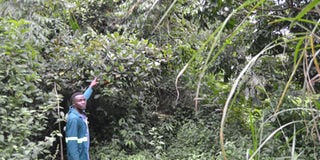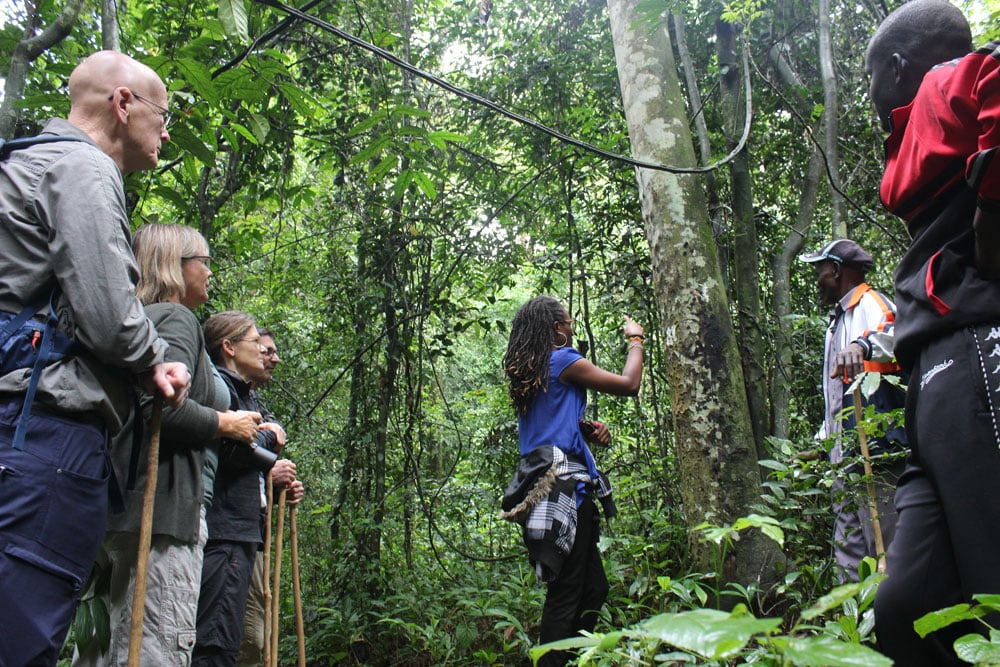Inside strategy to restore Luweero’s lost forest cover

Mr Derick Kavuma, a conservationist, shows a restored a section of Nandere Lazarus Forest Reserve in Luweero District on May 22. PHOTO/DAN WANDERA
What you need to know:
Officials say partnerships with institutions and private individuals to promote tree planting are paying off.
The task to restore the lost forest cover and protect the endangered indigenous trees long targeted for charcoal and timber is not lost in Greater Luweero, officials have said.
While the top leadership in Luweero, Nakasongola and Nakaseke blame the slow pace of restoration on the complex land tenure system and land grabbing that has left many former forested areas under private ownership, they say the new initiatives to encourage tree planting are paying off.
“It is true that encroachment on the former forest areas is the reason for the decreased forest cover, but we recently registered gains undertaken by both government and private actors. The Lazarus Forest Nandere under Kasana-Luweero Diocese is a good example of the forests being rejuvenated,” Mr Erasto Kibirango, the Luweero District chairperson, says.
“It is hard to monitor the tree planting on private land, but our natural resources officials continue to sensitise the public about the importance of tree planting. We now have institutions that have a deliberate policy on tree planting on sections of the land they own,” he adds.
Mr Deogratias Mijumbi, the Luweero District forestry officer, reveals that they have partnered with institutions and private individuals to promote tree planting guided by the National Forestry and Tree Planting Act, 2003.
“We have seen a significant increase in tree planting. The National Forestry Authority under the Ministry of Water and Environment has provided tree seedlings where interested institutions and individuals can access the trees for planting,” he explains.
Nandere Lazarus Forest, located in Nyimbwa Sub-county, Luweero District, which had earlier been destroyed through indiscriminate tree cutting for timber and charcoal, is undergoing a deliberate restoration process.
Mr Derrick Kavuma, a conservation officer at Bethany Land Institute that oversees the forest rejuvenation activities at Lazarus Nandere forest, says they have so far restored more than half of the former 244-acre natural forest.
Conservationists believe that natural tree rejuvenation also provide habitat for wildlife, including birds and animals.
“The conservation practice at the Lazarus Nandere forest is benefiting an entire ecosystem. The forest has fruit trees growing naturally and enjoyed by the birds and wild animals,” Mr Sylvester Kule, the director of programmes at Bethany Land Institute, explains.
To avoid encroachment, an outreach programme for communities was introduced to teach communities about the benefits of tree planting and help plant more trees.
“We can only boost forest tree cover through deliberate actions, including community sensitisation. This is the reason why Bethany Land Institute has outreach tree planting programmes in Nakaseke and Nakasongola,” Mr Kule says.
“Greater Luweero should be able to rejuvenate at least half of the lost tree cover by 2030. This is the reason why BLI now targets planting at least 33,333 trees per year at the Lazarus Nandere forest,” he adds.
Global Forest Watch, an international conservation organisation, estimates that by 2010, Luweero had lost 351 hectares of tree cover, covering about 62 percent of the total land area. In 2022, Luweero lost 5.96 hectares of tree cover.
But Luweero authorities reveal that deliberate tree planting activities have had a significant awareness campaign among the residents.
Mr Kibirango believes that while the campaign to plant more trees does not appeal to certain sections of the public, institutions should utilise the vast available land to plant more trees.
Efforts to save gazetted forest reserves from encroachment date back to 2010 when government entered a concession with World Bank.
Uganda’s Vision 2040 targets restoration of the country’s forest cover from 15 percent in 2010 to 24 percent by 2040. It remains to be seen if the target will be achieved.
Background
Some forecasts predict that private land in Uganda will not have forests in the next 10 years. This is backed by evidence from a 2016 Joint Water and Environment Sector Review Report that revealed that Uganda’s forest cover had reduced from 24 percent in 1990 to just 11 percent in 2015.





